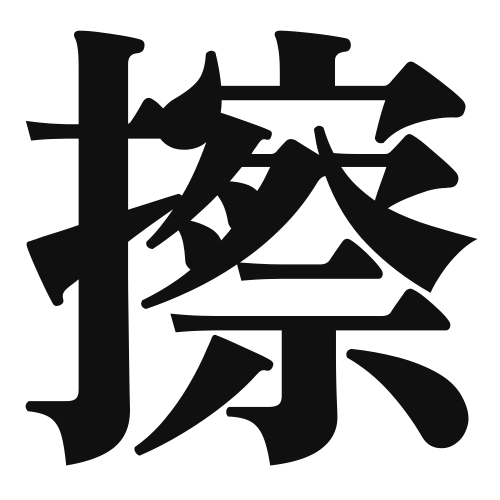1. Overview of Meaning
The kanji “擦” (satsu) generally means “to rub” or “to wipe.” It conveys the action of friction or contact between surfaces, often implying a gentle or careful motion.
2. Formation and Radical
Formation of the Kanji: The kanji “擦” is a phonetic compound (形声文字), which combines a semantic component and a phonetic component. The left part, “毛” (meaning “hair” or “fur”), suggests a texture, while the right part, “執” (which relates to holding or grasping), indicates the action of rubbing.
Radical: The radical for “擦” is “毛,” which is often associated with hair or fur, indicating a tactile quality.
3. Examples of Usage
Common Words and Phrases: Some frequently used words that include “擦” are:
- 擦る (suru) – to rub
- 擦り傷 (surikizu) – abrasion or scrape
Example Sentences in Daily Conversation:
- このテーブルを擦ってきれいにしましょう。 (Let’s rub this table to make it clean.)
- 彼は擦り傷を手当てした。 (He treated his abrasion.)
4. Synonyms and Antonyms
Similar Kanji: A similar kanji is “磨” (ma), which means “to polish.” While both involve friction, “磨” implies a more refined action aimed at making something smooth or shiny, whereas “擦” is more about the act of rubbing without the specific goal of polishing.
Opposite Kanji: An antonym could be “放” (hou), which means “to release” or “to let go.” This contrasts with the action of rubbing, which involves contact and friction.
5. Cultural and Historical Background
Relation to Japanese Culture: The act of rubbing is significant in various Japanese cultural practices, such as in calligraphy, where the careful rubbing of ink on paper is essential for creating beautiful characters.
Proverbs and Idioms: One common idiom is “擦り傷は心の傷” (Surikizu wa kokoro no kizu), which translates to “A scrape is a wound of the heart,” suggesting that physical injuries can reflect emotional pain.
